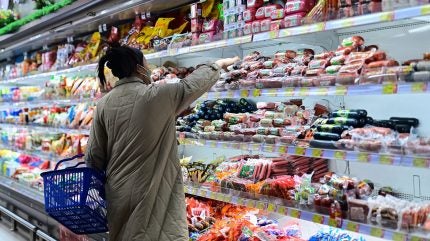
China has issued 50 new national food safety standards, along with nine amendments. in its latest round of revisions.
The updated standards introduce stricter rules around food labelling language, clearer expiry date formats, expanded allergen disclosure and new digital labelling tools aimed at improving transparency and supporting informed choices.
A key change in the updated regulations is the prohibition of labelling terms such as “no additives” or “zero additives.” Beijing argues these terms can mislead consumers, implying the absence of the additives mean the product is necessarily healthier.
China noted the use of approved additives is generally necessary and safe when used in accordance with existing food safety standards.
To further reduce confusion, the new standards also reinforce the requirement that any ingredient named in a product’s name must have its quantity clearly listed on the label.
A new digital labelling system has also been introduced, enabling consumers to scan QR codes on packaging to access expanded product information via mobile devices.
These digital labels are designed to address concerns about small font sizes and improve accessibility, especially for older consumers.
The revised rules require that pre-packaged foods now display their expiry dates in a more intuitive format, such as “Best before: 31 December 2025.” Previously, labels often listed only the production date alongside the duration of shelf life, requiring consumers to calculate expiry dates manually.
For products with a shelf life longer than six months, manufacturers are now permitted to omit the production date and instead display only the expiry date.
In addition, producers may voluntarily include a “consumption deadline” or “end of shelf-life” indicator. While the traditional “best before” date refers to the period when a product remains at peak quality, the “consumption deadline” marks the point beyond which it may no longer be safe to eat.
The update also reminds consumers that proper storage conditions are essential for maintaining food safety. Even clearly labelled products can become unsafe if not stored according to the instructions.
In a move to improve food safety for allergy sufferers, the revised standards now require the mandatory highlighting of eight major allergens when used as ingredients. These include gluten-containing cereals, crustaceans, fish, eggs, peanuts, soybeans, milk, and tree nuts.
Allergen declarations must be made either through bolding and underlining in the ingredient list or through a clear statement beneath it.
Authorities warned, however, that “allergen-free” labels can still be misleading. Since the standard only requires disclosure of eight allergens, other potential allergens not included in the list may still be present.
Given the variability of individual allergic reactions, the notion of a truly “allergen-free” food remains scientifically unfeasible and is not officially defined.
In addition, the General Standard for Foods for Special Medical Purposes for Infants has been expanded to cover six new product types. These include ketogenic and anti-reflux formulas, as well as specialised formulations for infants with rare metabolic disorders. These additions reflect efforts to address the needs of infants with medical conditions requiring specific diets.
The new nutrition labelling standard extends mandatory nutritional declarations from a “1+4” system – energy, protein, fat, carbohydrate, and sodium – to a “1+6” format.
Saturated fats and total sugars must now also be disclosed on packaging. Warnings regarding excessive intake of salt, oil, and sugar, particularly for children and adolescents, must be included.
By mandating the disclosure of these nutrients, the updated rules aim to support broader public health campaigns promoting reduced intake of salt, sugar, and fat to help address rising rates of obesity and chronic disease.



